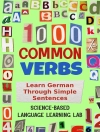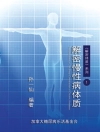Wanted for the global workforce: thinkers (and those who can teach them)
Where K-12 instruction once centered on content and memorization, today’s educators want, most of all, to teach their students to think critically and perceptively. What better way than with project-based learning (PBL)? Author Todd Stanley provides a teacher-friendly, step-by-step approach to implementing PBL, focusing on the 21st century ‘three R’s’: readiness, responsibility, and relevance.
Educators will be prepared to put this practical methodology to work right away, as they learn how to
- Use project and classroom management skills to create a positive, productive learning environment
- Develop curriculum around ten different project types
- Link projects with today’s standards
- Teach students how to effectively collaborate and bring out the best in each other
Readers will find an abundance of ideas and clear guidance, along with new strategies for instilling the skills students need for tomorrow’s workforce.
‘If you are looking for a way to produce higher level thinkers, you really need to read this book. It is a recipe for successful life long learners.’
Tamara Daugherty, Teacher
Lakeville Elementary School
‘Student lead project based learning fuses today’s classroom with the demands of the fast paced future. Students need to be able to interact and problem solve not just with each other, but also within the community and with technology. This book is a guide for helping educators make that jump with their instruction.’
Debra K. Las, Teacher
Rochest Public Schools
Содержание
Acknowledgments
About the Author
Introduction — Why Manage Your Classroom
1. Advantages to Managing Your Classroom
The 21st Century Three Rs
Other Advantages to Managing Your Classroom
2. Importance of 21st Century Skills
21st Century Survival Skills
Accessing and Analyzing Information
Curiosity and Imagination
Initiative
Adaptability
Effective Oral and Written Communication
Critical Thinking and Problem Solving
Collaboration Across Networks
3. Setting Up Your Projects
Define the Problem
Develop Solution Options
Plan the Project
Execute the Plan
Monitor and Control Progress
Close Project
4. Linking the Projects to the Standards: Creating a Mission Statement
Starting With the Content Standard
Working Backwards
5. Collaboration in the 21st Century Classroom
Skill of Collaboration
Setting Norms
Dividing up Tasks
DELETE
6. Risk Management
Why Projects Fail
Heading Off Problems
Handling the Unmotivated
Risk Management
7. Different Types of Products
Presentation
Museum/Exhibit
Debate
Performance
Competition
Portfolio
Research Paper
Model
Technology-Driven Products
Entrepreneurship
The Lemonade Stand
Social Studies Product—Buisness Plan
Language Arts Product—Advertising Campaign
Math Product—Polling/Accounting
8. Assessment of the Product
Use of Rubrics
Creating Your Rubrics
Creating Rubrics With Students
Performance Reviews (Self/Peer Evaluation)
9. Managing the Classroom
Orientation/Training Your Students
Laying the Groundwork
Making the Structure Clear
Model the Structure With a Mini-Project
What Training Will Be Important to the Job?
Providing Mental Space
Project Manager Versus Teacher
Closing the Project
Afterward: Creating the 21st Century Worker
Reproducibles: Blank Forms for Creating Own PBL
References
Index
Об авторе
Todd Stanley is the author of 7 teacher education books, including Project-Based Learning for Gifted Students: A Handbook for the 21st Century Classroom and Performance-Based Assessment for 21st Century Skills. He has been a classroom teacher for the past 18 years and was a National Board Certified teacher. He helped create a gifted academy for grades 5-8 where they employ inquiry-based learning, project-based learning, and performance-based assessment. He is currently the gifted service coordinator for Pickerington Local Schools where he lives with his wife, Nicki, and two daughters, Anna and Abby.












